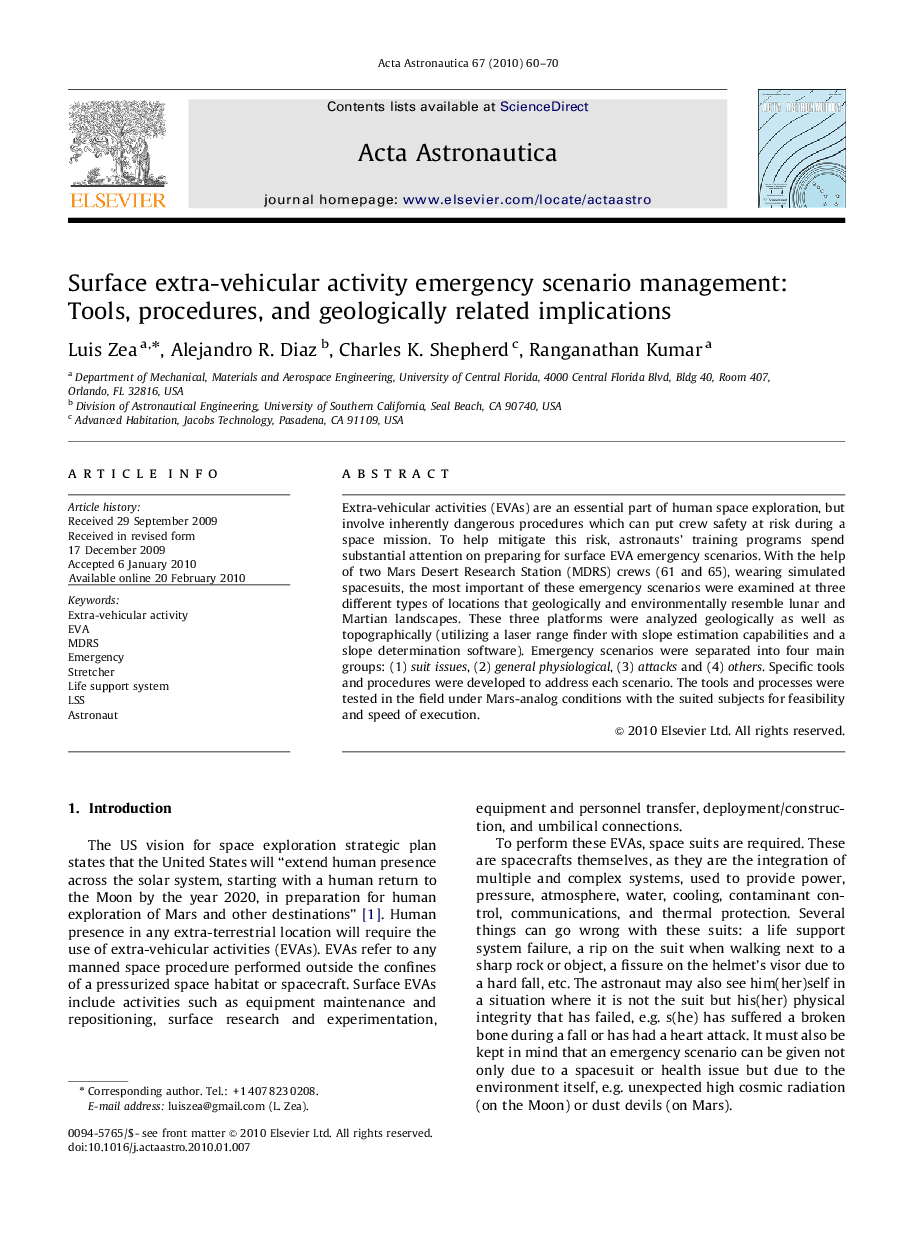| Article ID | Journal | Published Year | Pages | File Type |
|---|---|---|---|---|
| 1715988 | Acta Astronautica | 2010 | 11 Pages |
Extra-vehicular activities (EVAs) are an essential part of human space exploration, but involve inherently dangerous procedures which can put crew safety at risk during a space mission. To help mitigate this risk, astronauts’ training programs spend substantial attention on preparing for surface EVA emergency scenarios. With the help of two Mars Desert Research Station (MDRS) crews (61 and 65), wearing simulated spacesuits, the most important of these emergency scenarios were examined at three different types of locations that geologically and environmentally resemble lunar and Martian landscapes. These three platforms were analyzed geologically as well as topographically (utilizing a laser range finder with slope estimation capabilities and a slope determination software). Emergency scenarios were separated into four main groups: (1) suit issues, (2) general physiological, (3) attacks and (4) others. Specific tools and procedures were developed to address each scenario. The tools and processes were tested in the field under Mars-analog conditions with the suited subjects for feasibility and speed of execution.
